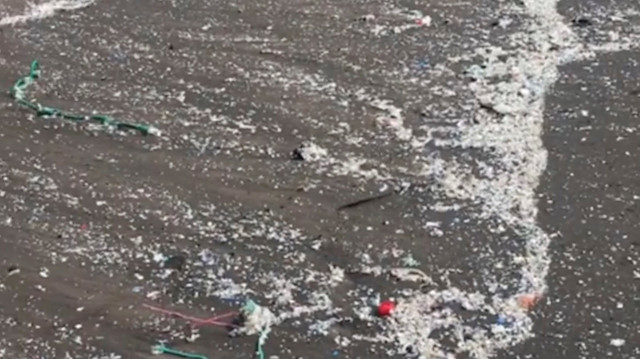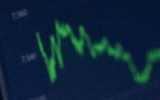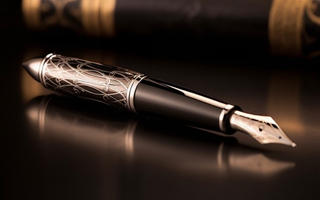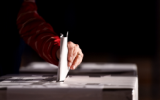
Pollutants in 2 major rivers in Java, world’s most crowded island risk aquatic life and human health, says a study
The high concentration of microplastics detected in the Bengawan Solo and Brantas rivers on Indonesia’s Java Island is not only affecting the aquatic life but poses threat to human health as well, according to the Ecological Observation and Wetlands Conservation (Ecoton) study.
Bordered by the Indian Ocean on the south and the Java Sea on the north, with a population of over 141 million, Java constitutes 56.7% of the Indonesian population and makes it the world's most populous island.
The Ecoton research team took water samples from seven locations in Bengawan Solo River, representing the upstream, middle, and downstream segments from August-October 2020. After testing them, the research team found the microplastics contamination in the upstream part of Ngawi regency at 76 particles per 100 liters.
The quantity of microplastic pollutants increased in the downstream area and was found 115-119 particles per 100 liters in the north coast of East Java province.
Speaking to Anadolu Agency, Ecoton Researcher Eka Chlara Budiarti said the microplastics contamination in Bengawan Solo River was coming from industrial and plastic wastes from households.
She said the plastic waste was then degraded by ultraviolet light, heat, microbes, or physical abrasion, turning it into smaller pieces, from -0.33-5 millimeters.
The researcher said the rising population density along the riverbanks has also contributed to the increase of plastic waste from households.
"Riverbank areas are often not covered by waste management facilities," she said.
Expressing concern at this situation, Budiarti said the river has an important role for the surrounding community as it is not only used in irrigation but is a drinking water source as well.
The largest river on the Java island flows along 600 kilometers starting from the Sewu Mountains in the southwest of Surakarta and ends in the northern sea of East Java.
According to the researcher, the condition of the Brantas River in East Java, which flows 320 km from Batu city to Surabaya, is not much different.
-Highest pollution in Malang
The Ecoton study has found microplastics contamination from 14-99 particles per 100 liters after taking samples at nine locations representing the upstream to downstream segments. The highest level of pollution was found in Malang city and the lowest was in Sidoarjo regency.
The liquid waste of the paper industry which uses plastic as raw material, domestic waste of residents who live in the watershed, and piles of garbage deliberately dumped into the river made the three sources of microplastics in the Brantas river.
Budarti said the microplastics found in the river, including the type of Polyethylene Terephthalate (PET), are difficult to recycle. This type of PET is usually used for disposable food or drinks packaging, syrup bottles, plastic straws, tape, and rope.
The study also found that microplastics have also contaminated fish, shellfish, and shrimp, mostly consumed by humans.
From samples taken from the watershed area of the Bengawan Solo river in Bojonegoro and Gresik regencies in East Java province, Ecoton found each wader fish was contaminated by 52 particles, while the microplastic in each tiger shrimp was 16 particles.
In the lower reaches of Brantas River, the microplastics contamination in the shrimp body was found 17-18 particles, and in green shellfish 70-105 particles.
Budiarti, said the pollutants have the potential to cause damage to digestive organs leading to the death of shrimp, wader fish, and shellfish. Further, the high level of microplastics in shellfish is very dangerous to human health as well.
"Because generally, humans eat the whole shellfish without having its stomach cleaned, so all the microplastics in the shellfish will move to human digestive organs,” she added.
While there are no specific studies to find the exact impact on humans, Budiarti said hazardous materials used in plastic raw materials, namely bisphenol A (BPA), alkylphenols, and phthalates can affect fertility rates and pose the risk of cancer in humans.
-Mark fishing area
She asked authorities to encourage efforts to reduce microplastics sources and draft policies to reduce or prohibit the use of single-use plastics. Also, to determine the fishing area on the east coast of Surabaya city, which has the least microplastics contamination.
"There needs to be a wider study to determine areas with minimal microplastics contamination as fishing zones," she added.
Idaa Warmadewanthi, a dean in Surabaya, East Java-based Sepuluh Nopember Institute of Technology (ITS), said the findings of microplastics in water and aquatic biota are closely related to poor waste management in Indonesia.
"The waste problem is a classic problem that has not been resolved until now," she told Anadolu Agency.
Since 2015, Indonesia has become the second-largest contributor of plastic waste to the oceans. According to World Bank, Indonesia produced 175,000 tons of waste every day in 2019 with 14% and around 24,500 tons out of this was plastic waste.
While the Environment and Forestry Ministry have set regulations for reducing waste by 30% by 2025. Warmadewanthi said that the waste problem can only be solved by changing people's habits of littering, rising waste sorting in households, improving waste processing infrastructure, standardizing types of plastic packaging, and issuing regulations at the local government level.
Meanwhile, Laksita Gama Rukmana, a staff of the Water Resources Information System of Bengawan Solo river, said the environmental issues come under the responsibility of the local government.
"Bengawan Solo center only focuses on water resources management," Rukmana told Anadolu Agency.
Warmadewanthi called the authority to tighten the implementation of regulations related to waste or the use of single-use plastics in the regions.
“Although many regions have local regulations on waste management, they are often not implemented properly,” she added.
-COVID-19 affects cleaning
Head of the Surabaya City Environment Office Eko Agus said that the COVID-19 pandemic has affected waste management on the east coast of Surabaya, where the ministry together with the local community, cleans the river to reduce the distribution of plastic waste.
"During the pandemic, we couldn't involve many people in voluntary work," he added.
To reduce the use of single-use plastics, Agus said the Surabaya City administration has issued regulations. He claimed that some offices in Surabaya use disposable bottled water and some shopping centers no longer provide free plastic bags to customers.
"If a plastic bag is not free, customers will prefer to bring their grocery bag," said Agus.
He said the government was planning to expand the regulation on the use of single-use plastics along with the provisions of the sanctions under the Regulation of Mayor, but it was delayed due to pandemic.
*Writing by Rhany Chairunissa Rufinaldo from Anadolu Agency's Indonesian-language service in Jakarta.
Hello, the comments you share on our site are a valuable resource for other users. Please respect other users and different opinions. Do not use rude, offensive, derogatory, or discriminatory language.
The floor is all yours.








